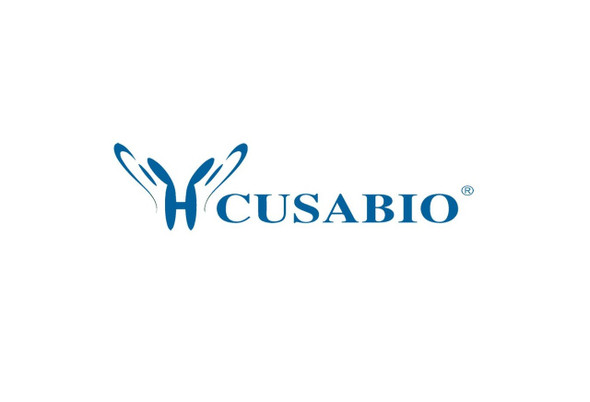Cusabio Human Recombinants
Recombinant Human Aspartoacylase (ASPA) | CSB-MP002223HU
- SKU:
- CSB-MP002223HU
- Availability:
- 3 - 7 Working Days
Description
Recombinant Human Aspartoacylase (ASPA) | CSB-MP002223HU | Cusabio
Alternative Name(s): Aminoacylase-2 ACY2, ASP
Gene Names: ASPA
Research Areas: Signal Transduction
Organism: Homo sapiens (Human)
AA Sequence: MTSCHIAEEHIQKVAIFGGTHGNELTGVFLVKHWLENGAEIQRTGLEVKPFITNPRAVKKCTRYIDCDLNRIFDLENLGKKMSEDLPYEVRRAQEINHLFGPKDSEDSYDIIFDLHNTTSNMGCTLILEDSRNNFLIQMFHYIKTSLAPLPCYVYLIEHPSLKYATTRSIAKYPVGIEVGPQPQGVLRADILDQMRKMIKHALDFIHHFNEGKEFPPCAIEVYKIIEKVDYPRDENGEIAAIIHPNLQDQDWKPLHPGDPMFLTLDGKTIPLGGDCTVYPVFVNEAAYYEKKEAFAKTTKLTLNAKSIRCCLH
Source: Mammalian cell
Tag Info: N-terminal 10xHis-tagged and C-terminal Myc-tagged
Expression Region: 1-313aa
Sequence Info: Full Length
MW: 39.7 kDa
Purity: Greater than 85% as determined by SDS-PAGE.
Relevance: Catalyzes the deacetylation of N-acetylaspartic acid (NAA) to produce acetate and L-aspartate. NAA occurs in high concentration in brain and its hydrolysis NAA plays a significant part in the maintenance of intact white matter. In other tissues it act as a scavenger of NAA from body fluids.
Reference: "Examination of the mechanism of human brain aspartoacylase through the binding of an intermediate analogue." Le Coq J., Pavlovsky A., Malik R., Sanishvili R., Xu C., Viola R.E. Biochemistry 47:3484-3492(2008)
Storage: The shelf life is related to many factors, storage state, buffer ingredients, storage temperature and the stability of the protein itself. Generally, the shelf life of liquid form is 6 months at -20?/-80?. The shelf life of lyophilized form is 12 months at -20?/-80?.
Notes: Repeated freezing and thawing is not recommended. Store working aliquots at 4? for up to one week.
Function: Catalyzes the deacetylation of N-acetylaspartic acid (NAA) to produce acetate and L-aspartate. NAA occurs in high concentration in brain and its hydrolysis NAA plays a significant part in the maintenance of intact white matter. In other tissues it act as a scavenger of NAA from body fluids.
Involvement in disease: Canavan disease (CAND)
Subcellular Location: Cytoplasm, Nucleus
Protein Families: AspA/AstE family, Aspartoacylase subfamily
Tissue Specificity: Brain white matter, skeletal muscle, kidney, adrenal glands, lung and liver.
Paythway:
Form: Liquid or Lyophilized powder
Buffer: If the delivery form is liquid, the default storage buffer is Tris/PBS-based buffer, 5%-50% glycerol. If the delivery form is lyophilized powder, the buffer before lyophilization is Tris/PBS-based buffer, 6% Trehalose, pH 8.0.
Reconstitution: We recommend that this vial be briefly centrifuged prior to opening to bring the contents to the bottom. Please reconstitute protein in deionized sterile water to a concentration of 0.1-1.0 mg/mL.We recommend to add 5-50% of glycerol (final concentration) and aliquot for long-term storage at -20?/-80?. Our default final concentration of glycerol is 50%. Customers could use it as reference.
Uniprot ID: P45381
HGNC Database Link: HGNC
UniGene Database Link: UniGene
KEGG Database Link: KEGG
STRING Database Link: STRING
OMIM Database Link: OMIM










